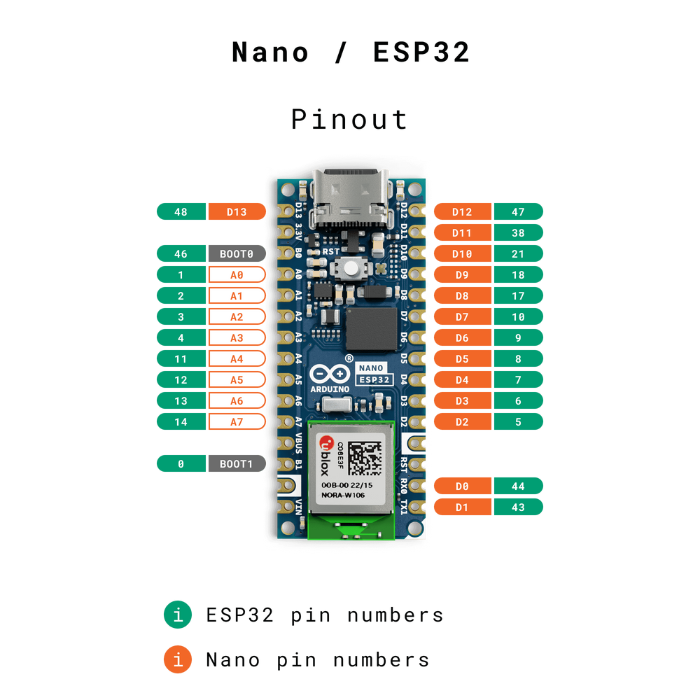3.6/3.7V Dual 18650 Rechargeable Lithium Battery Charger
sim7670c ic is good but it booting is very complication any other metod to connect 4G pius sms read and write
2A Dual L298N Motor Driver Module with PWM Control

Arduino NANO ESP32 with Headers - ABX00083
Let us know!
We'll try to match the price for you
Couldn't load pickup availability


The Arduino Nano ESP32 is a game-changing addition to the Arduino family, providing access to MicroPython and Arduino programming via the popular ESP32-S3. This board is a wonderful resource for people at all stages of their journey, whether they are new to this field or seasoned professionals looking to incorporate it into their next inventions. Now is the time to start your next IoT project and unleash your creativity.

Empower Your Innovations: The Arduino Nano ESP32 extends the iconic Nano series, bringing the power of ESP32-S3 to your fingertips. Arduino and MicroPython enthusiasts can now explore uncharted territories without limitations.
Seamless IoT Integration: With Wi-Fi and Bluetooth capabilities powered by ESP32-S3, your projects can effortlessly communicate and interact with the digital world.
Your Programming Playground: Switch between Arduino and MicroPython programming effortlessly. Dive into MicroPython with our introductory course, perfect for newcomers eager to learn and innovate.
IoT Elevated: It is fully compatible with Arduino's IoT Cloud, offering you a simple yet secure way to communicate with your connected devices. Monitor and control your projects with ease, all through the Arduino IoT Cloud app.
Limitless Possibilities: Emulate human interface devices using HID support, enabling interaction beyond the ordinary. Connect your creations to computers and expand the horizon of your projects.
| I/O Voltage | 3.3 V |
| Input voltage (nominal) | 6-21 V |
| Source Current per I/O Pin | 40 mA |
| Sink Current per I/O Pin | 28 mA |
| Processor | up to 240 MHz |
| ROM | 384 kB |
| SRAM | 512 kB |
| External Flash | 128 Mbit (16 MB) |
| Width | 18 mm |
| Length | 45 mm |
This product comes with a 1-year manufacturer warranty from the date of purchase, covering manufacturing defects only.
The product shows signs of physical damage, mishandling, exposure to water/moisture, fire, natural calamities, unauthorized repairs, improper storage near heat or direct sunlight, or alteration in any way.